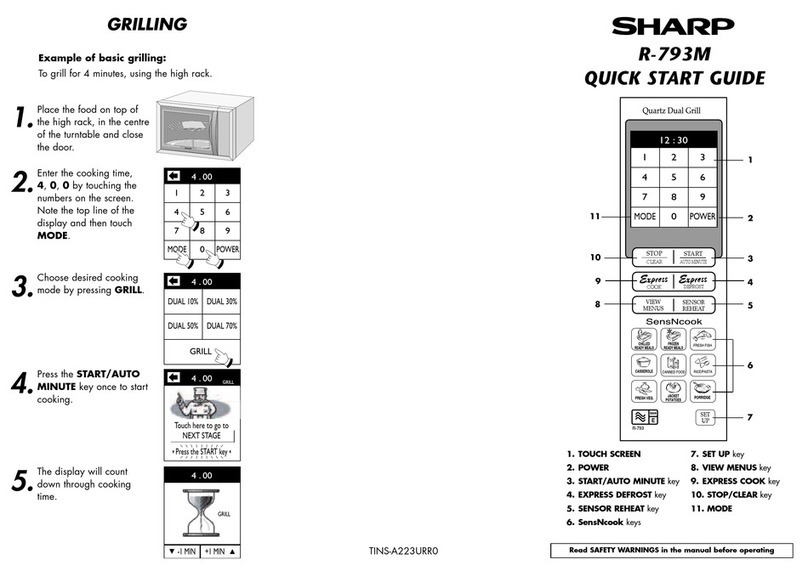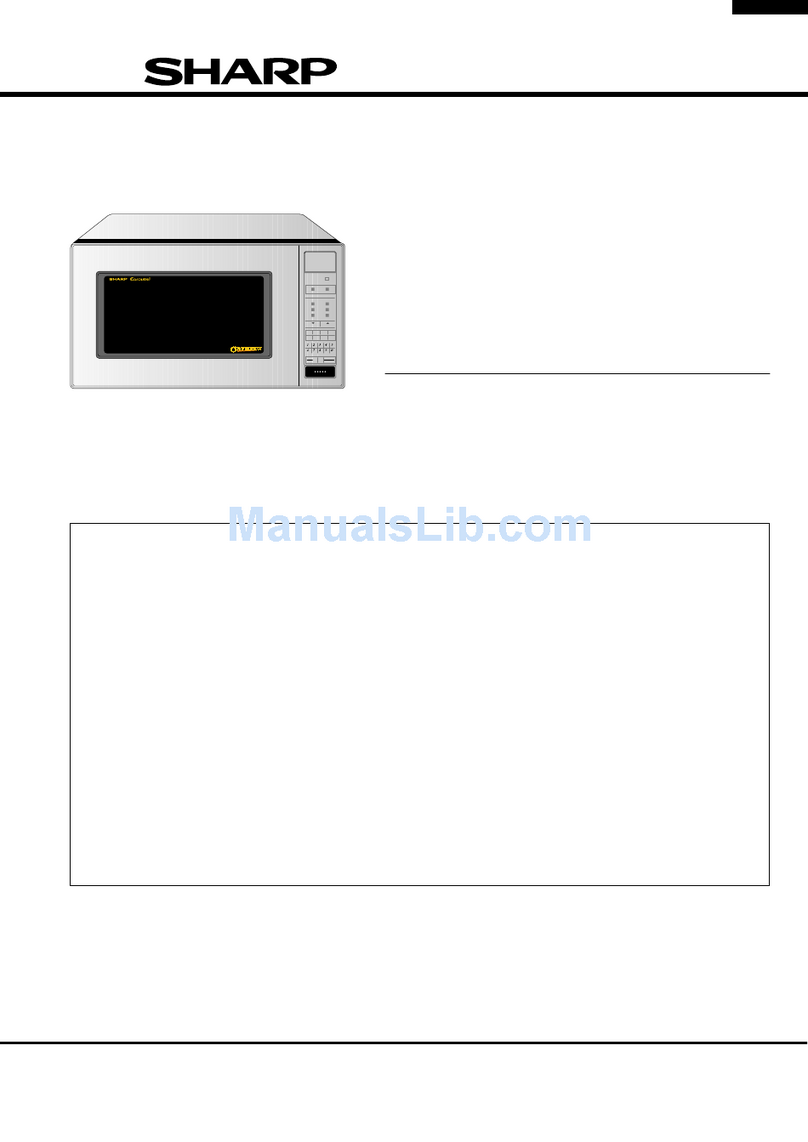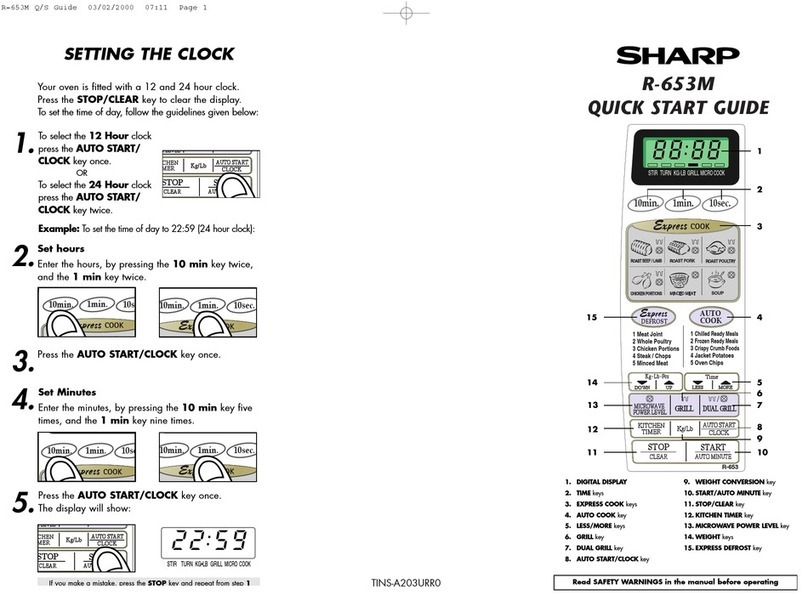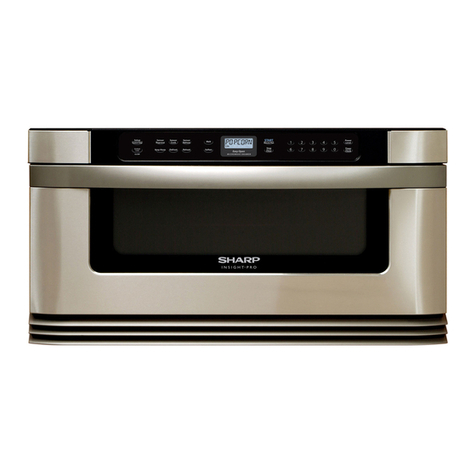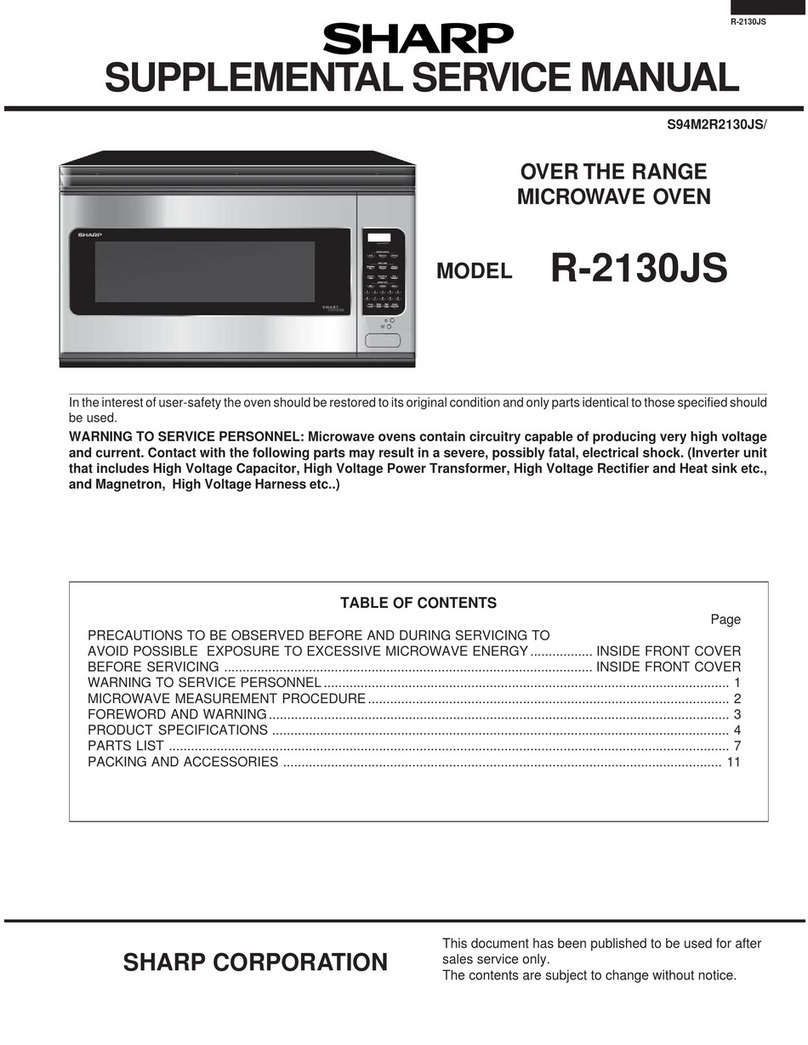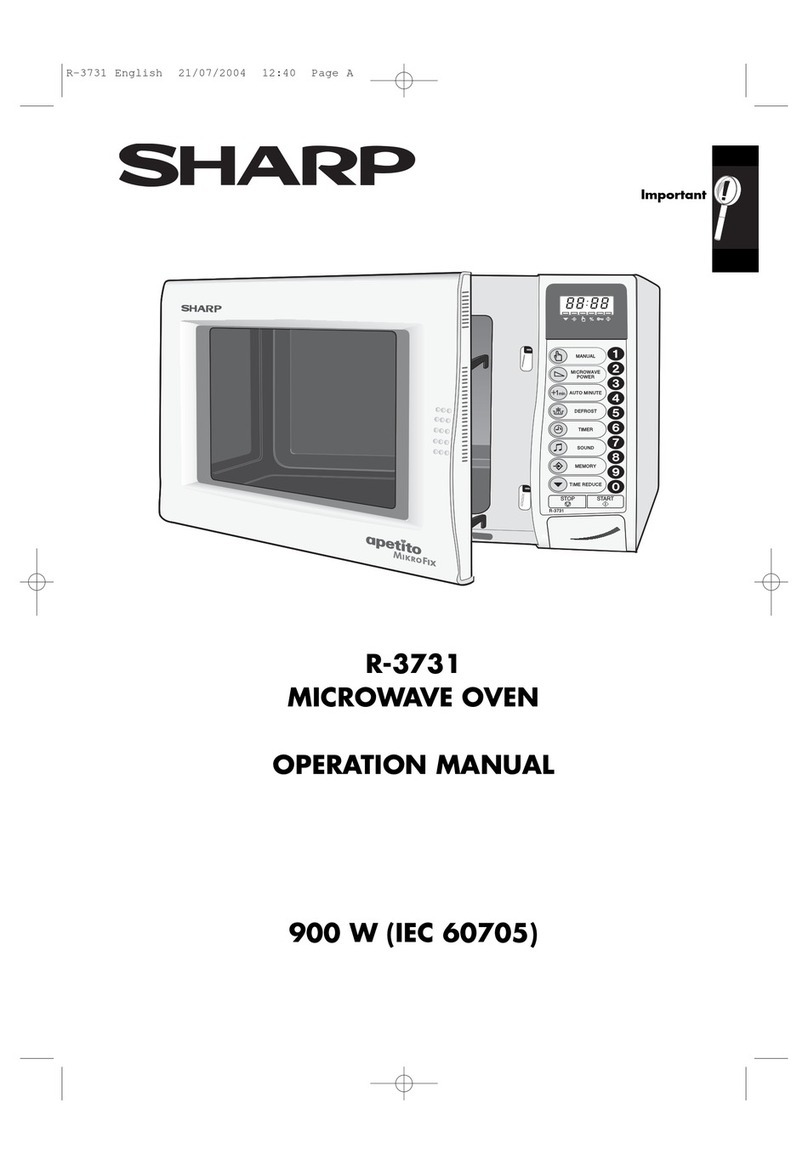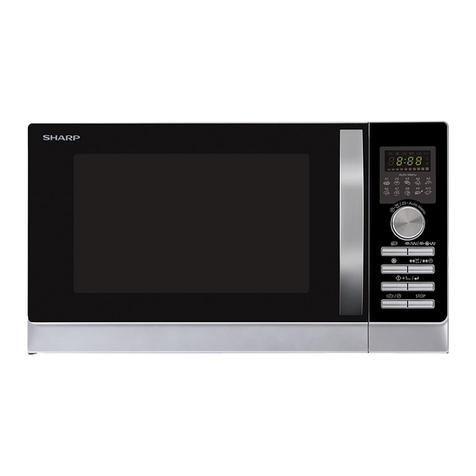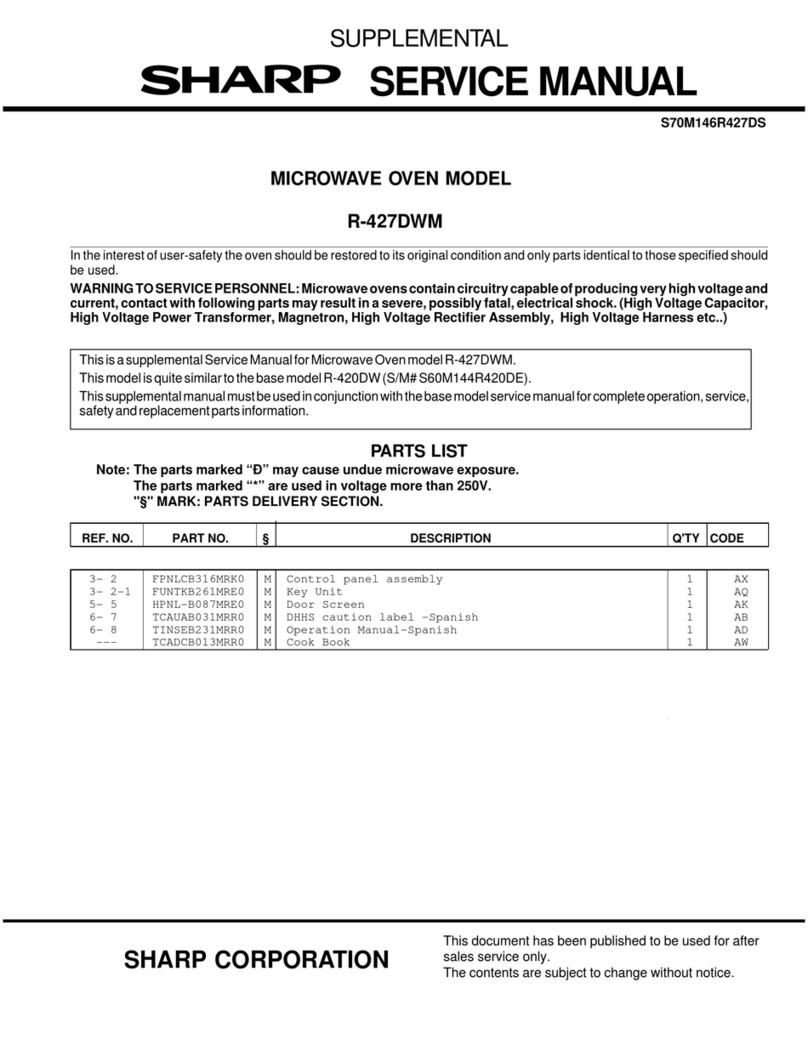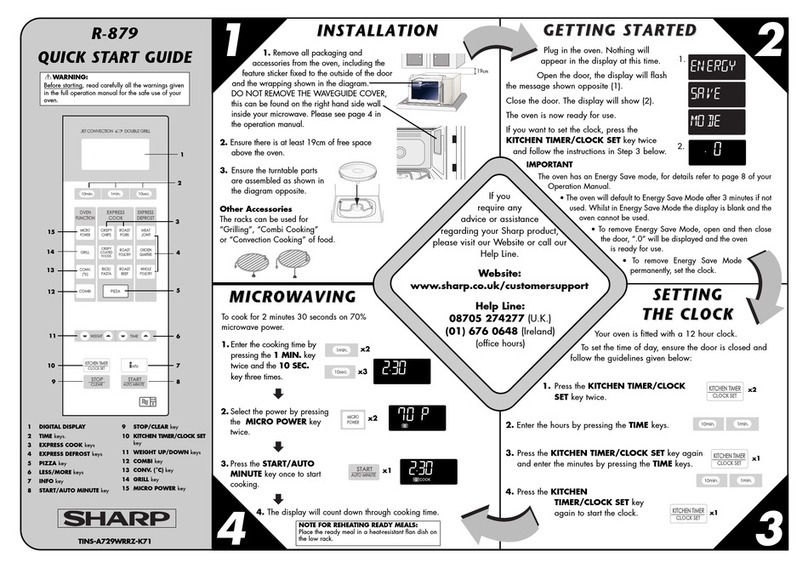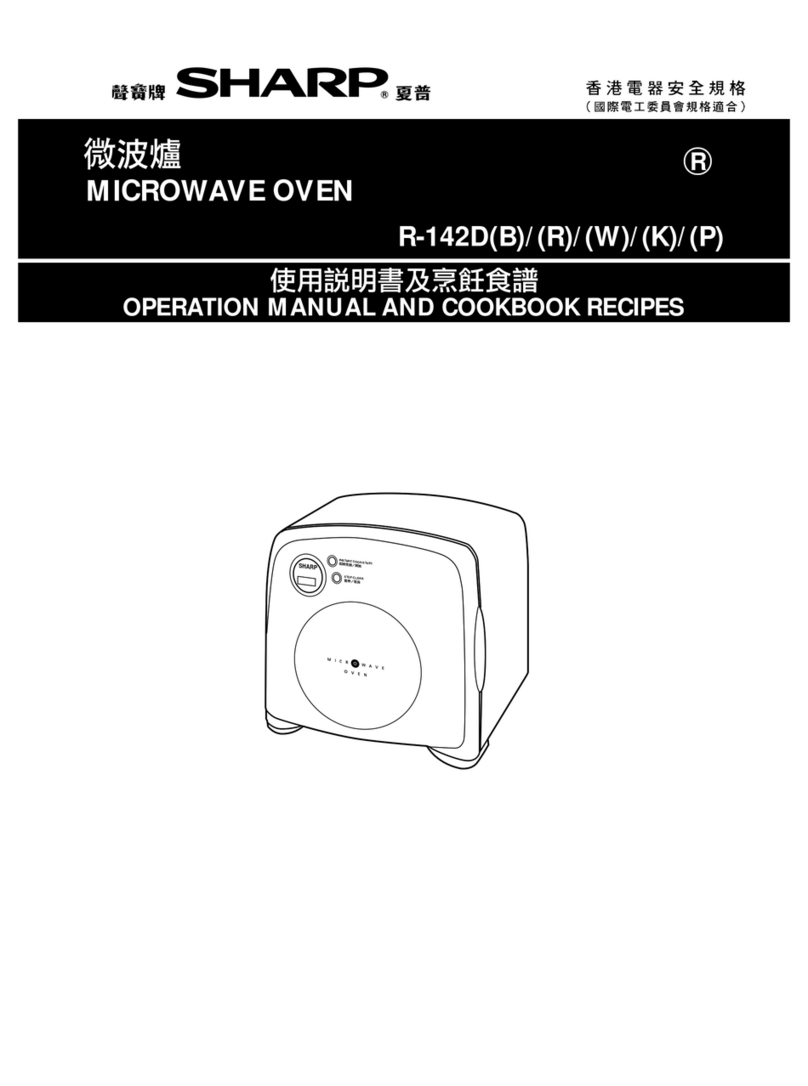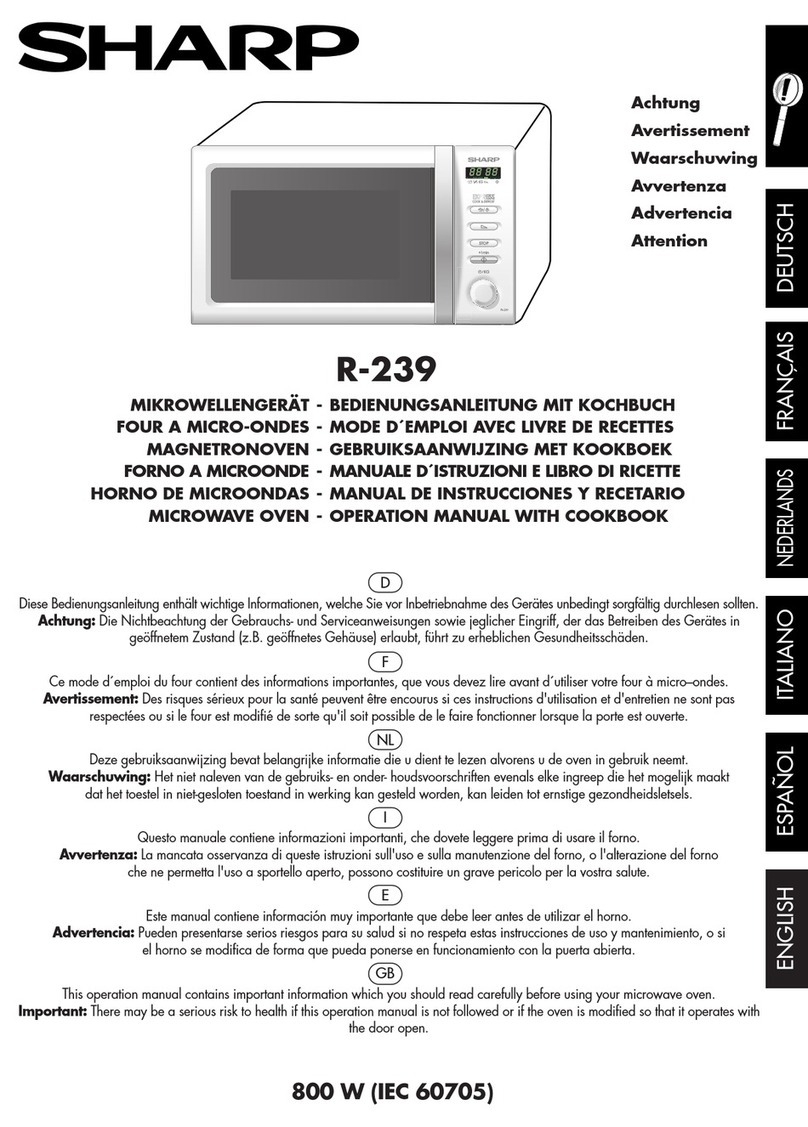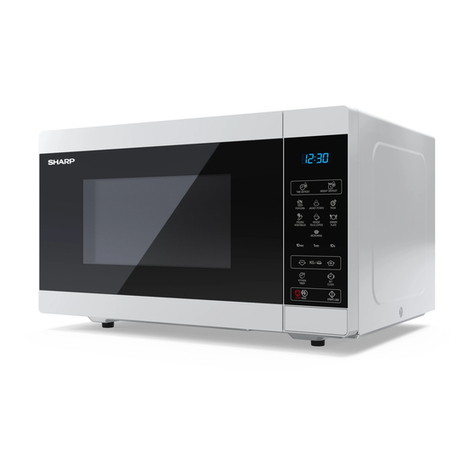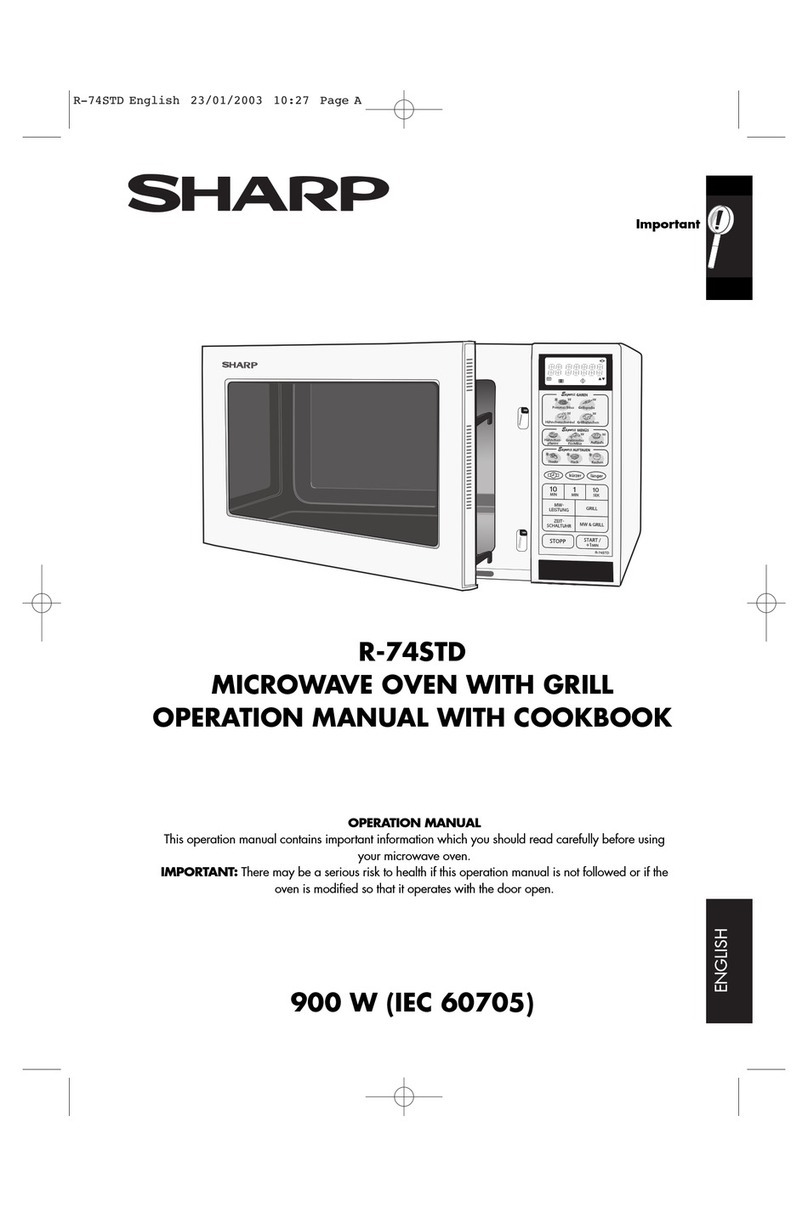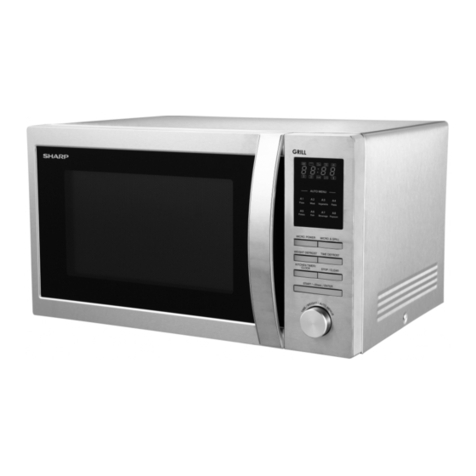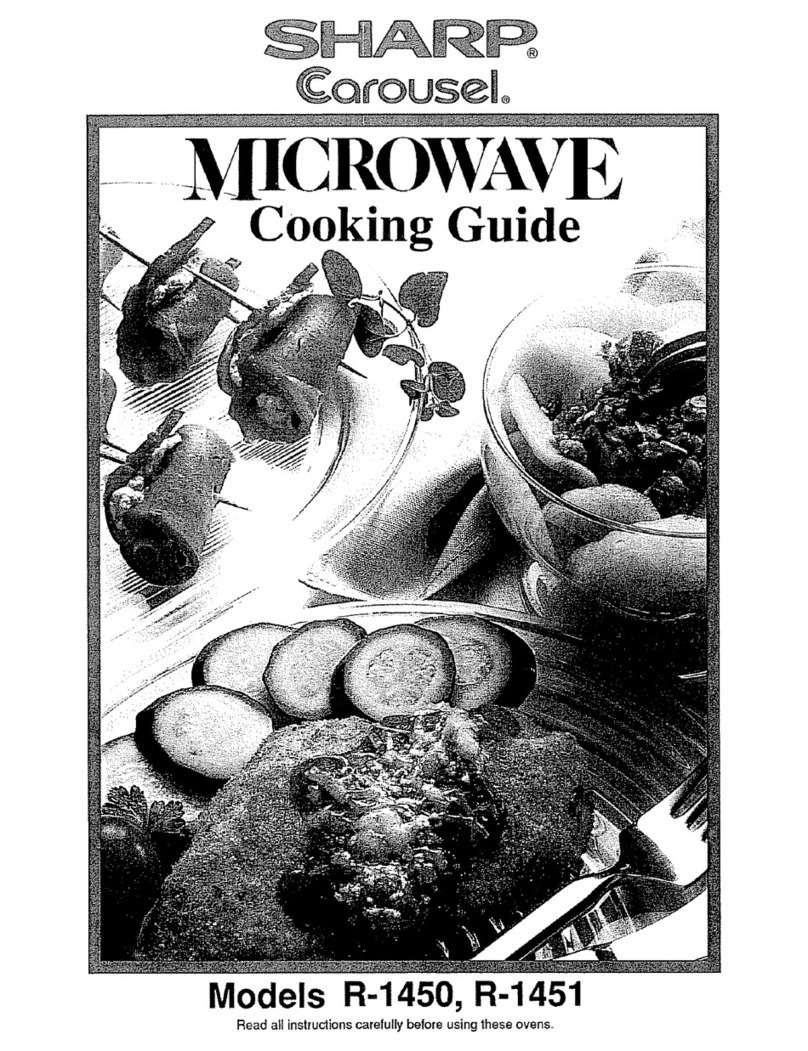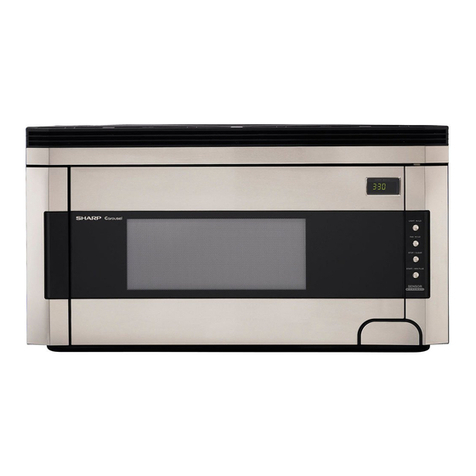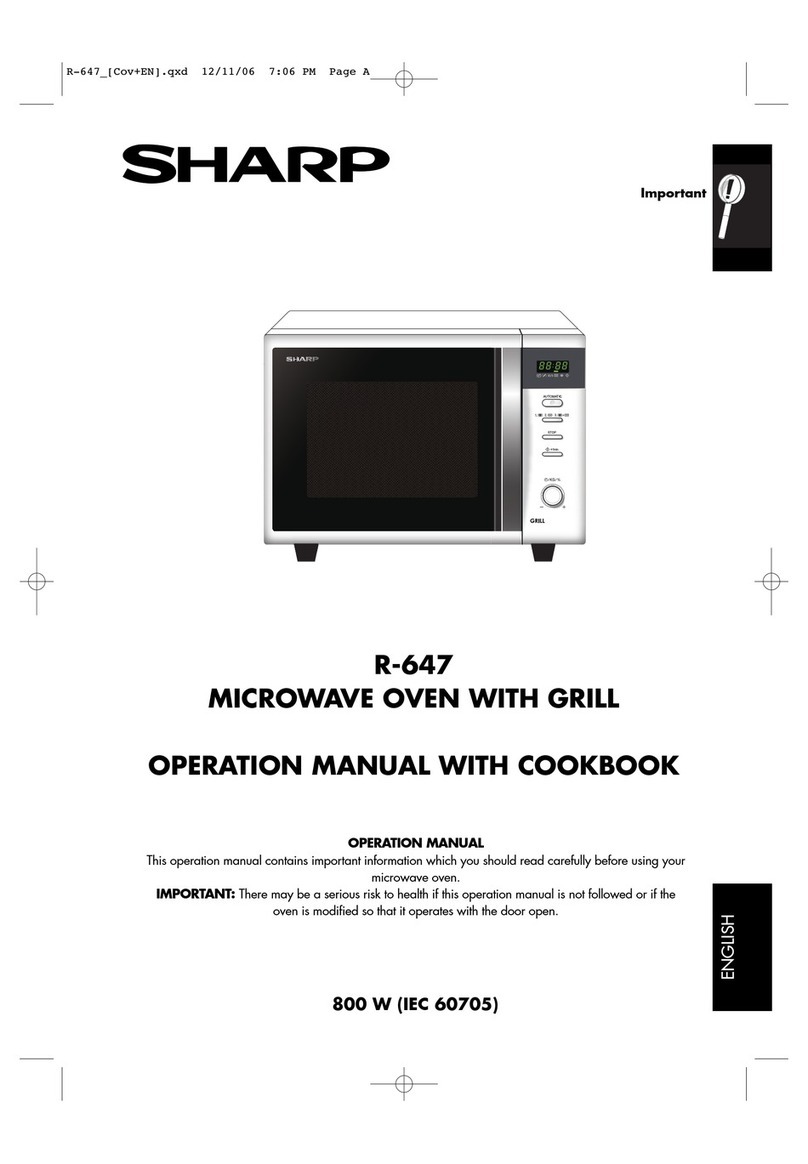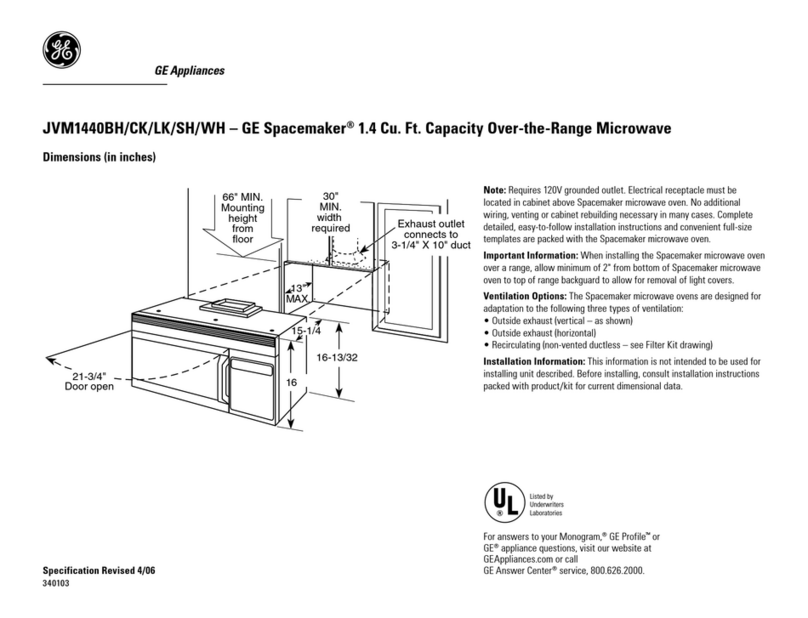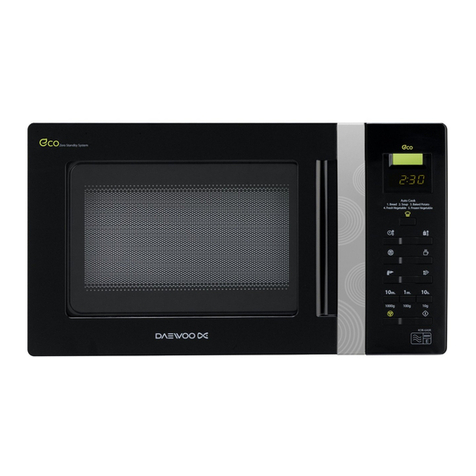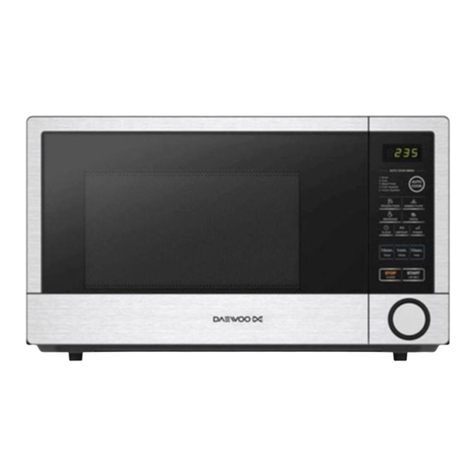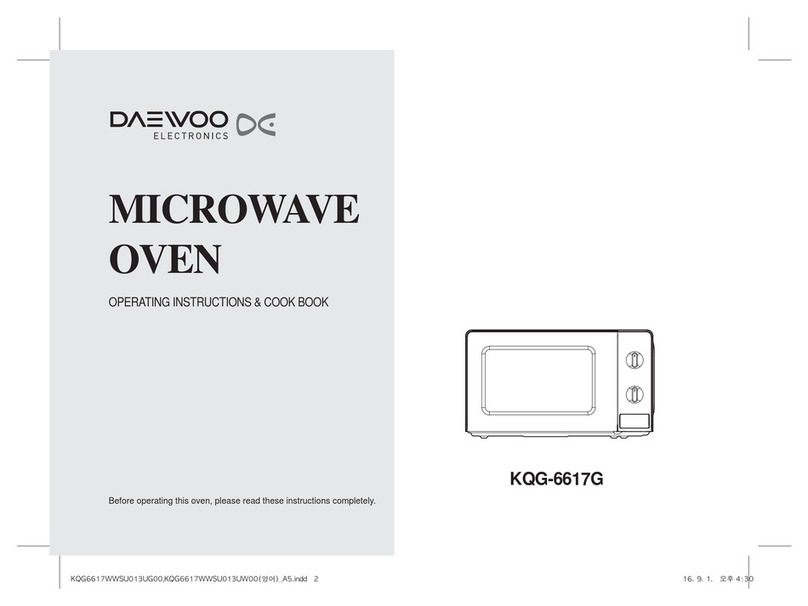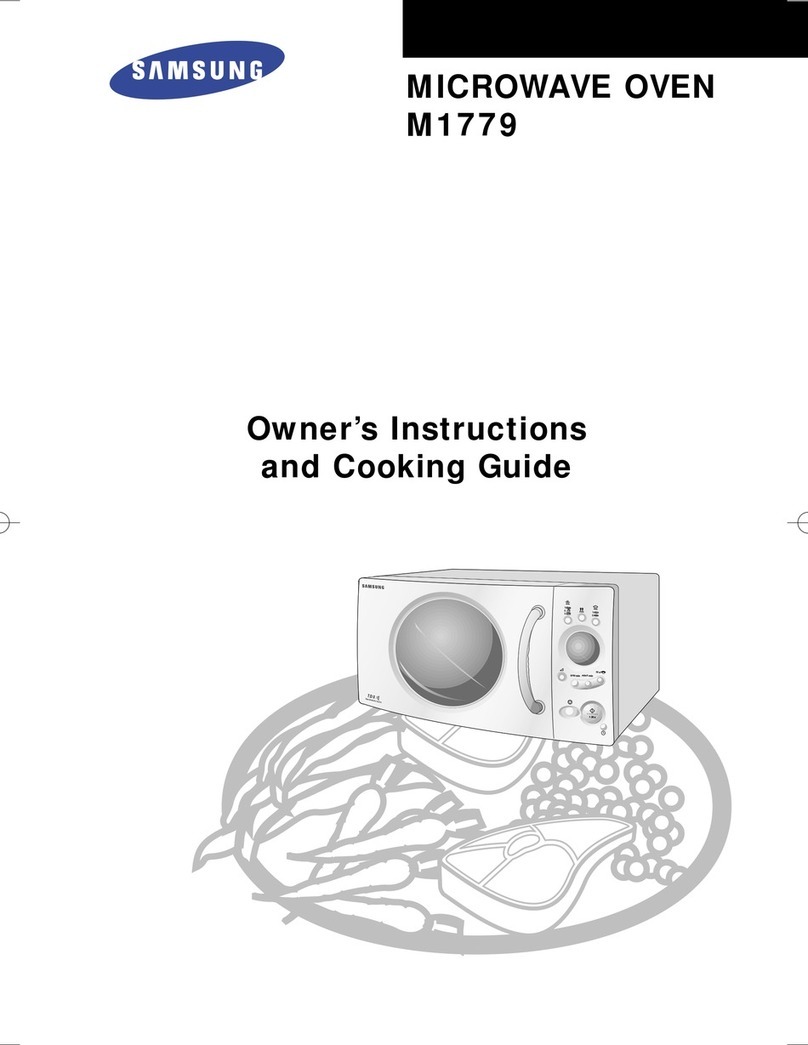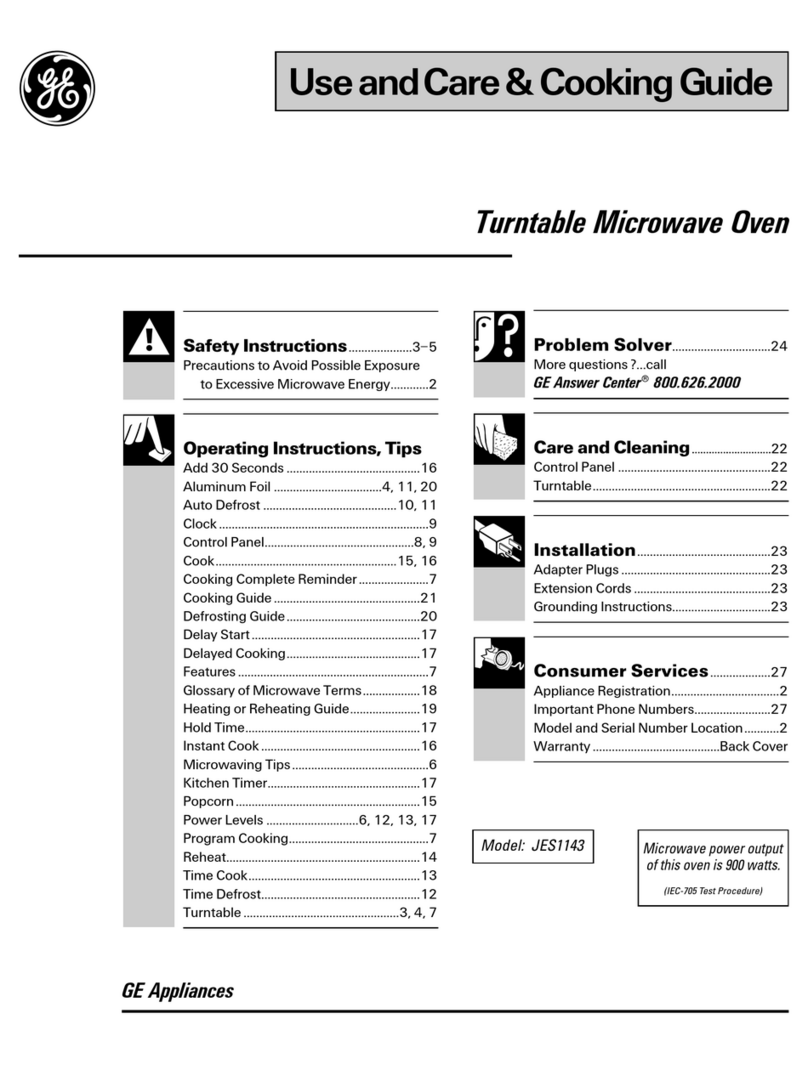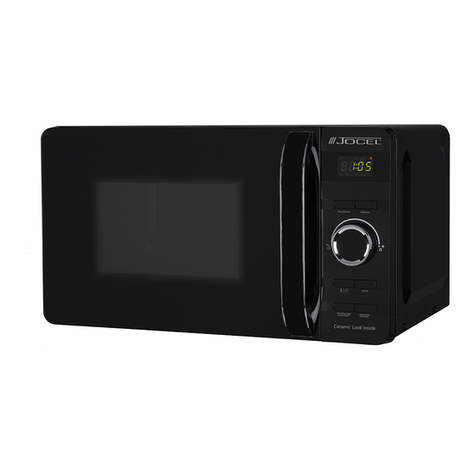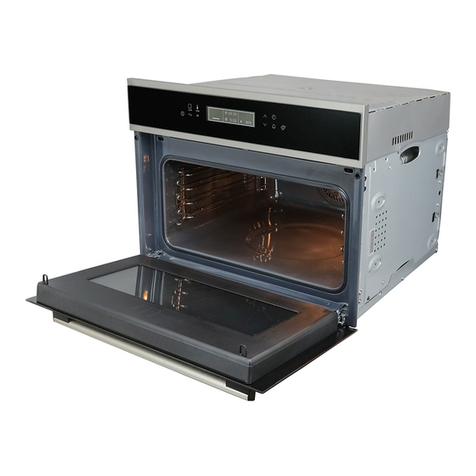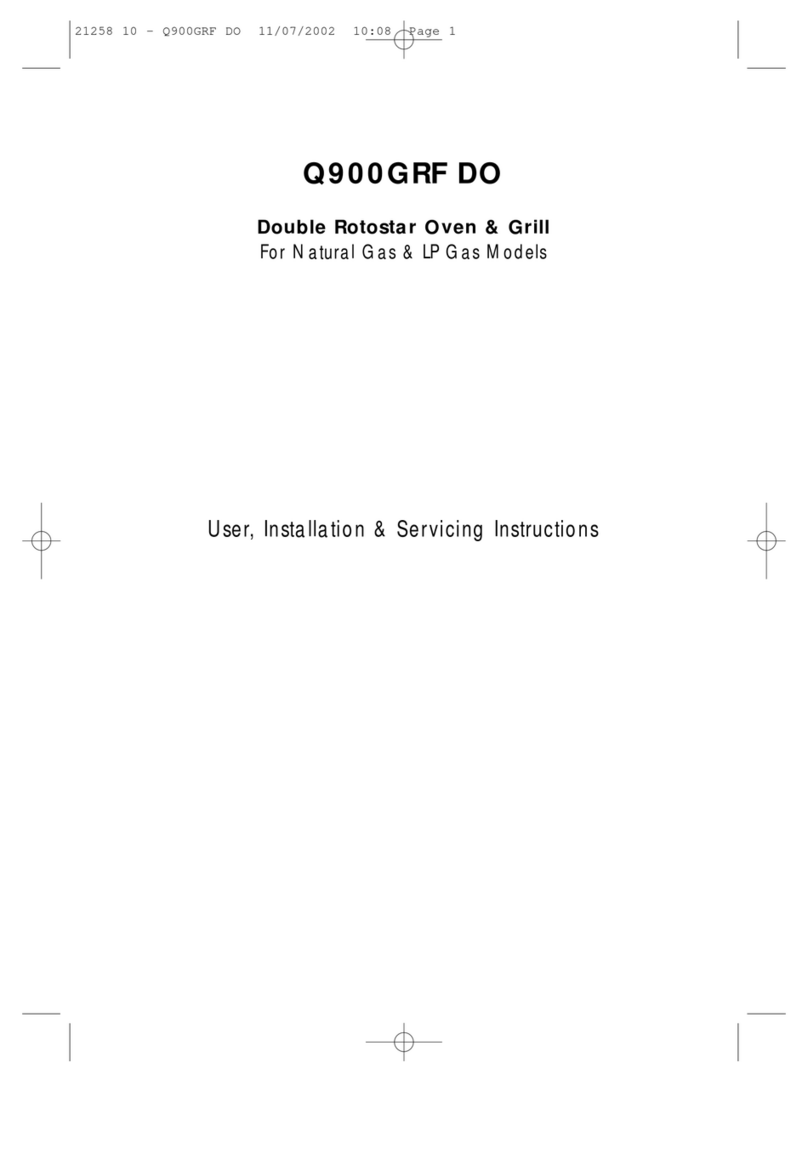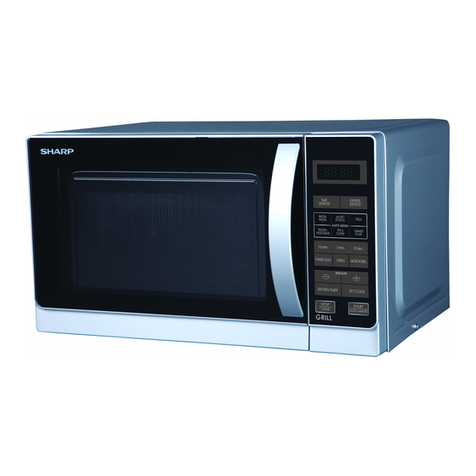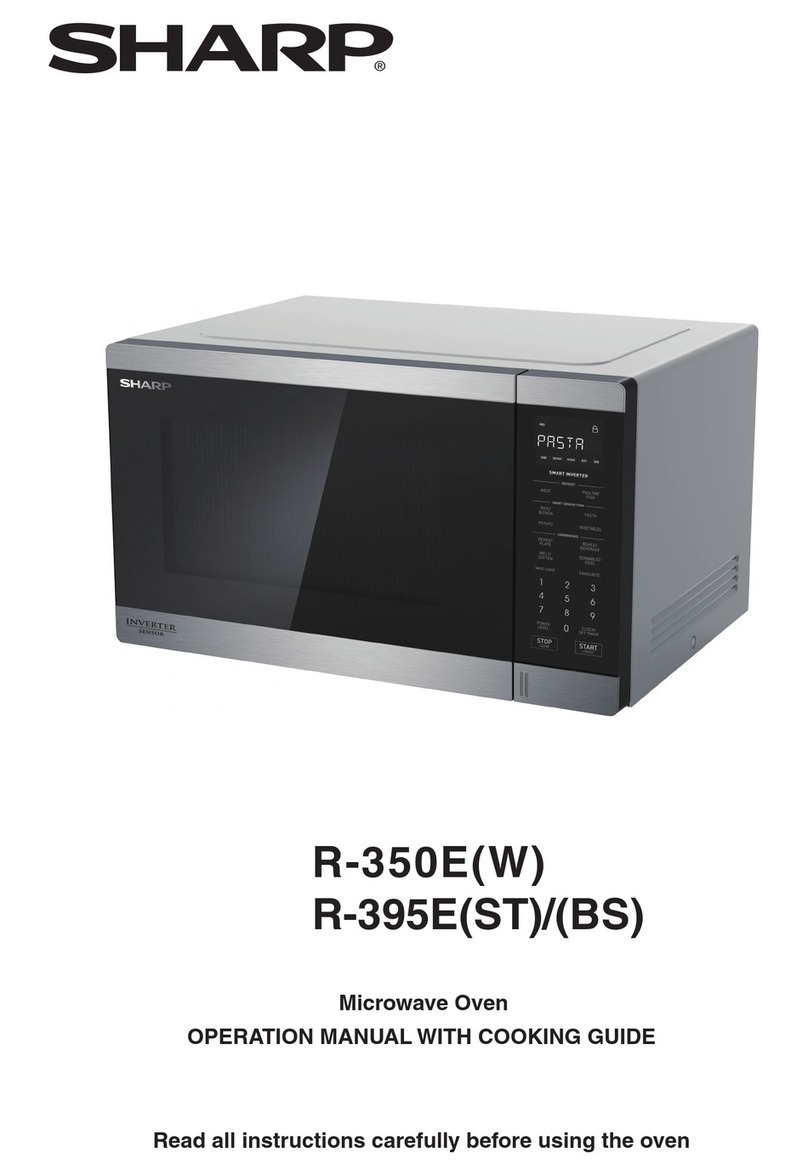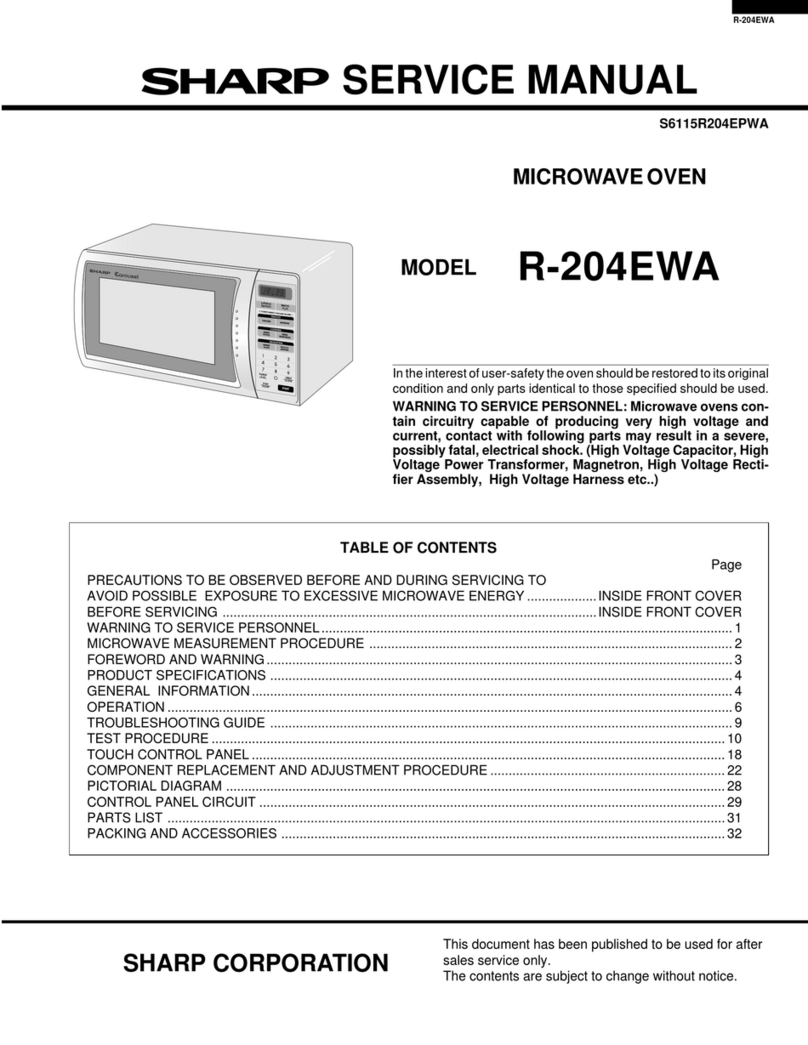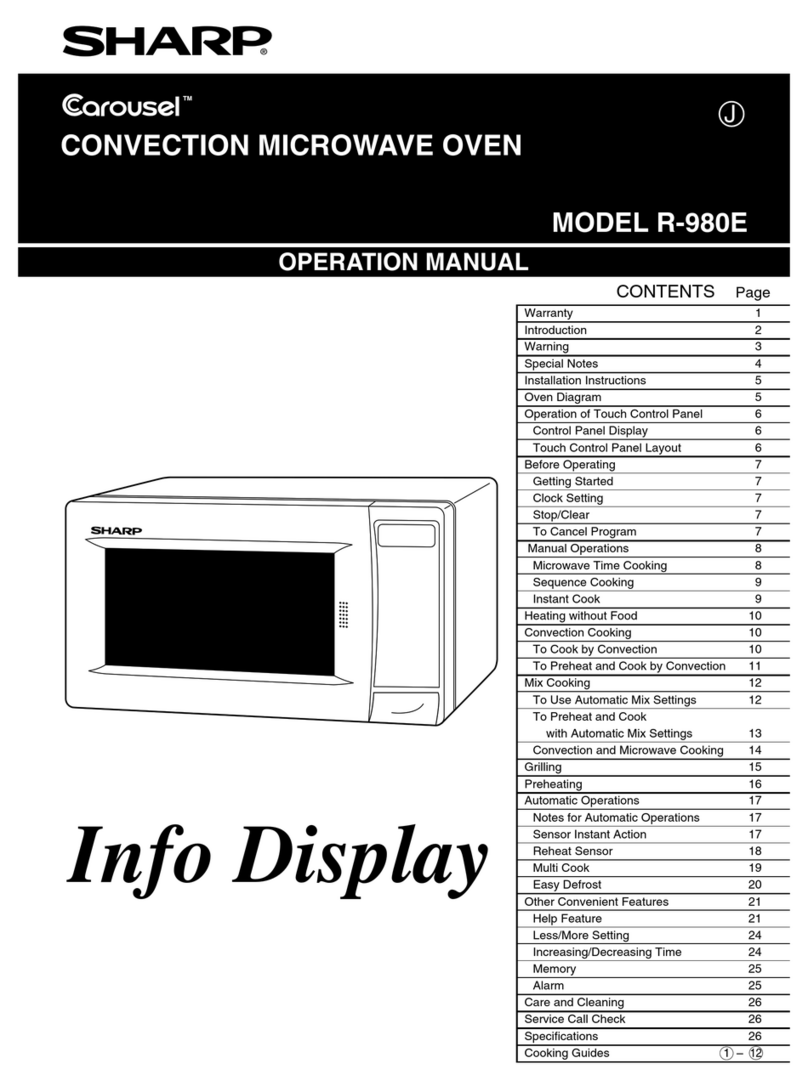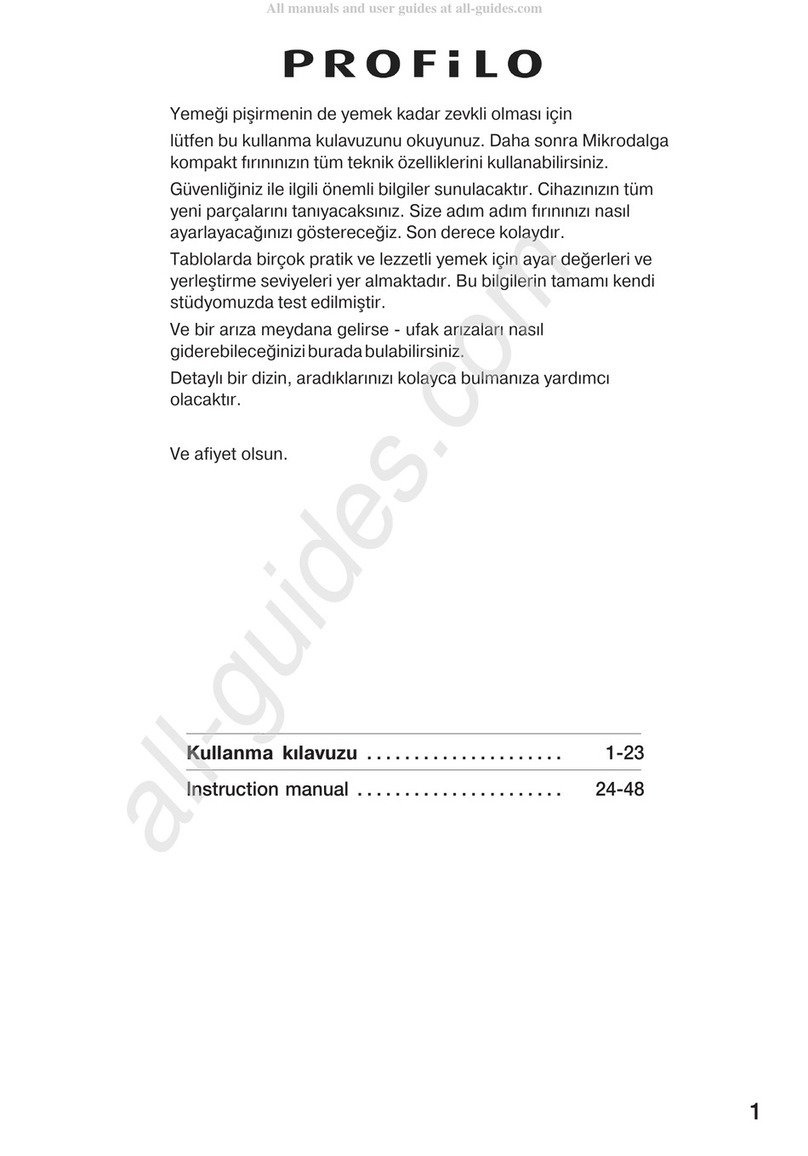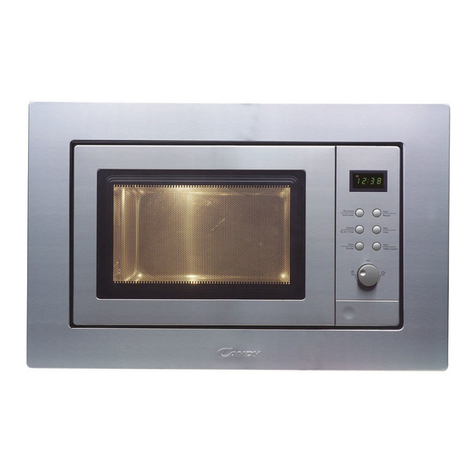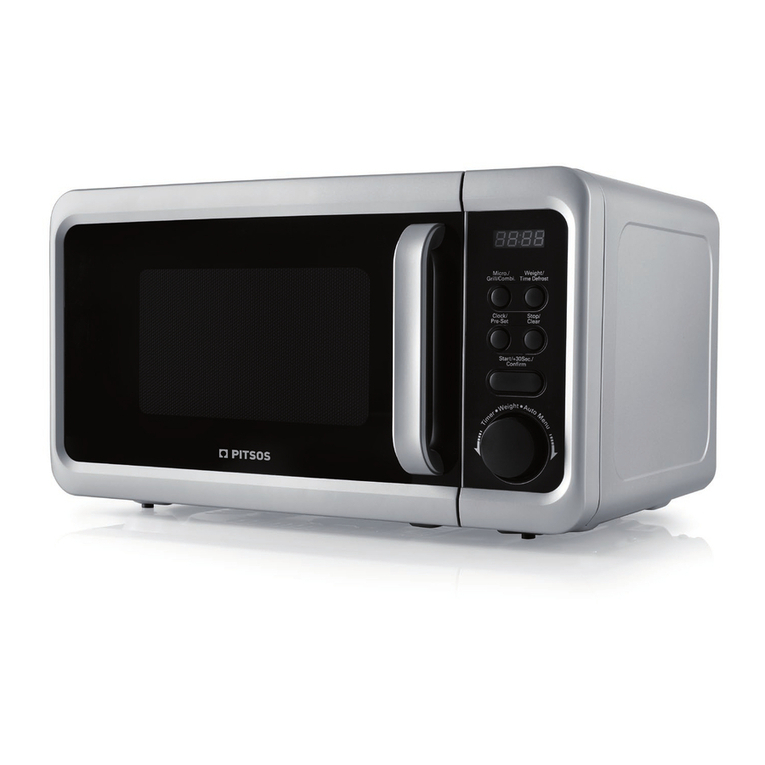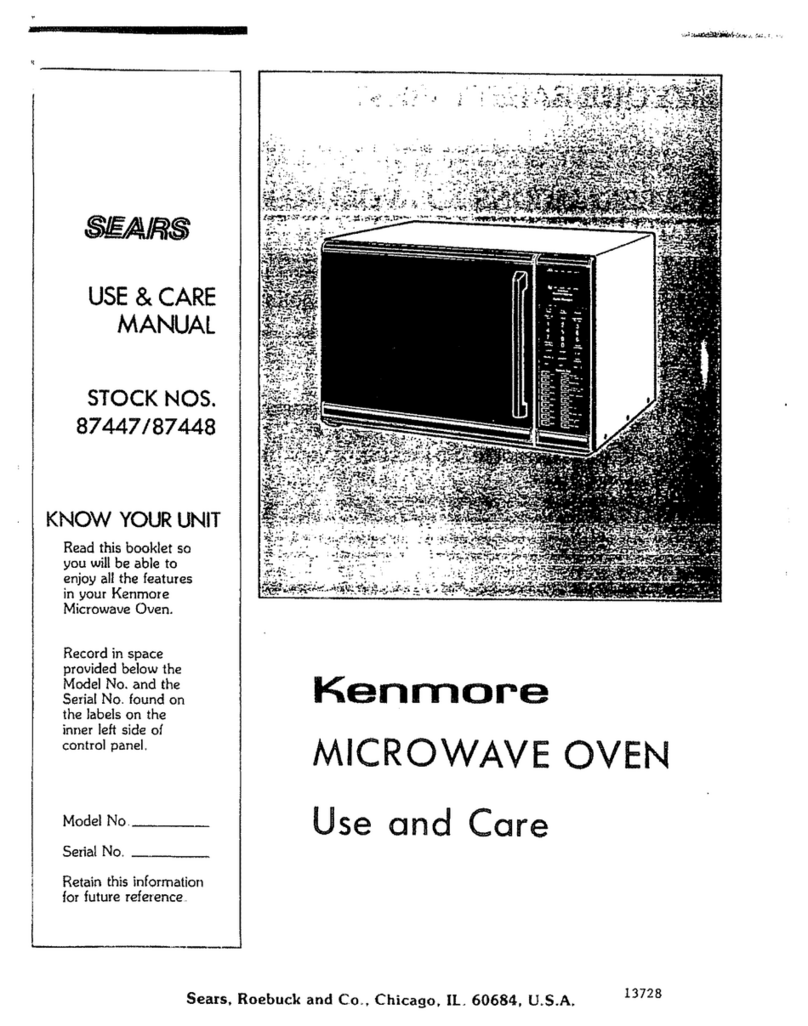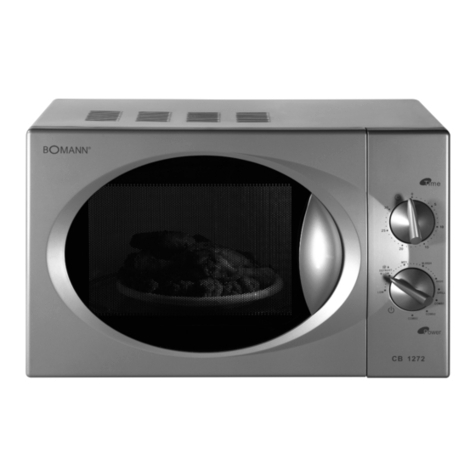
6
R-340DK
R-340DW
OPERATION
DESCRIPTION OF OPERATING SEQUENCE
Thefollowingisadescriptionofcomponentfunctionsduring
oven operation.
OFF CONDITION
Closing the door activates the door sensing switch and
secondary interlock switch. (In this condition, the monitor
switch contacts are opened.)
When oven is plugged in, 120 volts A.C. is supplied to the
control unit (Figure O-1).
1. "Setclock"key and"Videodemo"keywill beappeared
on the touch screen.
2. Touch"Set clock"key and setthe clockreferring tothe
operation manual.
NOTE: If any keys are not touched for 30 seconds, the
touchscreenwillgoontotheVideoDemomode.To
cancel the Video Demo mode, touch the STOP/
CLEAR pad. And then set the clock.
3. Thetouchscreenwillshowthehomepageaftersetting
the clock.
4. The following is the example of the Home page in the
case the time of the day is set to 12:30 p.m..
NOTE: Evenif the clockis not set,the displaywill show the
Home page by touching the STOP/CLEAR pad
within 30 seconds after plugged in.
COOKING CONDITION
Program desired cooking time by touching the NUMBER
keys on the touch screen. Program the power level by
touching the POWER LEVEL key and then touch the
desired percentage key on the touch screen.
When the START pad is touched, the following operations
occur:
1. The contacts of relays are closed and components
connected to the relays are turned on as follows.
(For details, refer to Figure O-2)
RELAY CONNECTED COMPONENTS
RY-1 oven lamp/turntable motor/fan motor
RY-2 power transformer
2. 120 volts A.C. is supplied to the primary winding of the
power transformer and is converted to about 3.1 volts
A.C. output on the filament winding, and approximately
2370 volts A.C. on the high voltage winding.
3. The filament winding voltage heats the magnetron
filamentandtheH.V.windingvoltageissenttoavoltage
doubler circuit.
4. The microwave energy produced by the magnetron is
channelled through the waveguide into the cavity feed-
box, and then into the cavity where the food is placed to
be cooked.
5. Upon completion of the cooking time, the power
transformer, oven lamp, etc. are turned off, and the
generation of microwave energy is stopped. The oven
will revert to the OFF condition.
6. When the door is opened during a cook cycle, the
monitorswitch,doorsensingswitch,secondaryinterlock
switch, relay (RY1) and primary interlock relay are
activated with the following results. The circuits to the
turntable motor, the cooling fan motor, and the high
voltage components are de-energized, the oven lamp
remainson,andthedigitalread-outdisplaysthetimestill
remaining in the cook cycle when the door was opened.
7. Themonitorswitchelectrically monitorstheoperationof
the secondary interlock switch and primary interlock
relay and is mechanically associated with the door so
that it will function in the following sequence.
(1)
Whenthedooropensfromtheclosedposition,theprimary
interlock relay (RY2) and secondary interlock switch
open their contacts. And contacts of the relay (RY1)
remains closed. Then the monitor switch contacts close.
(2)When the door is closed from the open position, the
monitor switch contacts open first. Then the contacts of
the secondary interlock switch and door sensing switch
close. And contacts of the relay (RY1) open.
Ifthesecondaryinterlock switchandprimaryinterlockrelay
(RY2)failwiththecontactsclosedwhenthedoorisopened,
the closing of the monitor switch contacts will form a short
circuitthroughthemonitorfuse,secondaryinterlockswitch,
relay (RY1) and primary interlock relay (RY2), causing the
monitor fuse to blow.
POWER LEVEL 0% TO 90% COOKING
When Variable Cooking Power is programmed, the 120
voltsA.C.issuppliedtothepowertransformerintermittently
throughthecontactsofrelay(RY-2)whichisoperatedbythe
controlunitwithina32secondtimebase.Microwavepower
operation is as follows:
VARI-MODE ON TIME OFF TIME
POWER 100% (100% power) 32 sec. 0 sec.
POWER 90% (approx. 90% power) 30 sec. 2 sec.
POWER 80% (approx. 80% power) 26 sec. 6 sec.
POWER 70% (approx. 70% power) 24 sec. 8 sec.
POWER 60% (approx. 60% power) 22 sec. 10 sec.
POWER 50% (approx. 50% power) 18 sec. 14 sec.
POWER 40% (approx. 40% power) 16 sec. 16 sec.
POWER 30% (approx. 30% power) 12 sec. 20 sec.
POWER 20% (approx. 20% power) 8 sec. 24 sec.
POWER 10% (approx. 10% power) 6 sec. 26 sec.
POWER 0% (approx. 0% power) 0 sec. 32 sec.
Minute
Plus + Kitchen
Timer
12 : 30 PM
123
456
78
0
9
